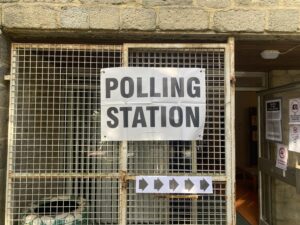Economics and governance for city bounce
 Cities with strong mutual networks and relationships are more able to bounce back from shocks and adapt to challenges, says Neil McInroy
Cities with strong mutual networks and relationships are more able to bounce back from shocks and adapt to challenges, says Neil McInroy
‘I don’t know what the future will be for the city, but it has a good future’, so said a city official of Talinn, Estonia. This has always stuck in my mind, as it neatly sums up the enduring history of cities and the optimism we have in them. A history which is one of many changes in fortune, but which, even in periods of stress, eventually comes good. All cities are in some ways characterised by adaptability and resilience in the face of social, technological and environmental change.
However, we live in unprecedented times, with many challenges. Cities stand at a crossroads and for their future to be ‘good’, we need to start thinking through two things. Firstly, the detailed make-up of this intrinsic historical capacity for resilience, and secondly, how we build more of it. How can we develop this capacity, a capacity which enables cities to ‘roll with the punches’ and ‘bounce back’ quickly from any adversity and be flexible in taking advantage of opportunities?
THE CHALLENGES
- ECONOMIC turmoil and the challenge to re-position and reset cities in relation to global economic forces, while creating more independent and self sustaining local economic activity.
- ENVIRONMENTAL change creates a need for cities to plan and adapt to mitigate the effects of environmental change and create new ways of sustainable living.
- Migration and DEMOGRAPHIC shifts, in particular ageing, create new pressures on public resources and change the nature of how we live together.
- CITY FINANCES are under pressure. The fallout from the economic crises, plus a seemingly ever increasing demand on public services, means we must find ways of reducing pressure of public finances.
- A range of political and cultural forces, including NEW FORMS OF CITIZENSHIP and social movements, are resulting in an increasing demand for people and civil society to do more in shaping and making cities.
This ongoing economic, social, cultural and environmental change is now the new normal and our city plans and approach to governance should reflect this new normality. No city can solely rely on past approaches to succeed in the future. We know from history that areas which become locked into a singular economic sector, fail to plan for environmental adaptation or misread the scale of social and cultural shifts may well be left behind, as the changes swamp and erode the city and the way it operates. It is essential that we plan for cities to ‘bounce back’ from challenges, and in turn learn, create a memory and knowledge of how to strengthen the city for the future, and the additional challenges to come. Key to this is working with the notion that cities are networks.
CITIES AS NETWORKS
Cities are part of and are in themselves networks. For the most part, city governance, while aware of networks, do not strategically assess the myriad of connections and networks which operate within cities. However, these networks and connections are the ‘DNA’ of cities. They are its lifeblood. But these networks and connections are brittle. The failure of the sub prime mortgage market in the US, and the complex and opaque connections between this and the banking system around the world, had significant ramifications for city finances, as well as national economies.
Networks are important for resilience and that is why many are increasingly interested in networks and how cities operate as systems. System thinking is about the how different things in a network influence one another. In nature, an example is a typical ecosystem – including air, water, animals and plants – and how they work together within a system. In cities, this constitutes different people, structures and processes which leads to either efficient or inefficient ways of working, depending on the effectiveness of the whole system.
Our resilience model hones in on the strength of the relationships between the public, private and social economies. We believe these relationships and connections help generate resilience within an area.
Perhaps the most fundamental element of a good system is that it is not about independent individuals and organisations going off in their own directions to create change. Such a system, demonstrating a lack of connectedness, will suffer through lack of coherence and unintended consequences. An illustrative example comes from quantum physics. There are no independent entities at all at the quantum level as it is all about the relationships which make up the ‘whole’. This is the same for the city. It’s not the housing, or the transport, or business, or social life which is of utmost importance, but rather how they relate as a whole.
Inspired by initial global research, CLES has been thinking of places and cities as systems for a number of years now – defined by how they respond and adapt their places to new challenges, whether these are economic, social, or environmental. Those systems able to exude these qualities are generally the most resilient.
THE CLES APPROACH
The CLES resilience model moves beyond traditional ‘linear’ and ‘silo’ thinking about cities, taking a ‘whole systems’ approach that looks at the key agents and linkages operating within cities.
The framework has been designed to ensure all parts of the economy are represented: the social; commercial; and public economies. The commercial economy is often seen as the priority for cities, but the resilience model demonstrates that the public sector can have considerable influence on a locality through procurement spend, planning and employment opportunities. Likewise, the social economy does not regularly feature in economic thinking and strategies, but plays a crucial role in providing the foundations for any healthy and effective economy both directly through local employment, local supply chains, volunteering and social enterprise, but also indirectly through development of social capital and promotion of civil engagement and participative democracy.
What makes the resilience model stand out is that whilst it focuses on traditional elements of ‘the economy’, it hones in on the relative strength of the reciprocal relationships between the public, private and social economies. We believe these relationships and connections help to generate resilience within an area. Stronger mutual relationships allow a locality to be more flexible and able to react if faced with an economic or environmental change.
 CLES has been working with a number of local authorities and their partners across the UK and in in Australia as part of our place resilience research programme. This has incorporated assessing the resilience of systems at a range of geographical levels – including city, county, sub-regional, district, town centre and individual neighbourhoods. The model’s principal assumption is that through improving the quality of the multitude of relationships within activity, that synergies and innovative responses to the key challenges can be tackled.
CLES has been working with a number of local authorities and their partners across the UK and in in Australia as part of our place resilience research programme. This has incorporated assessing the resilience of systems at a range of geographical levels – including city, county, sub-regional, district, town centre and individual neighbourhoods. The model’s principal assumption is that through improving the quality of the multitude of relationships within activity, that synergies and innovative responses to the key challenges can be tackled.
Using the CLES resilience model tool we develop a qualitative assessment of how strong relationships between the sectors currently are and the impact that these relationships have on city resilience. To do this, we explore the relationships between the three core spheres of the economy (the public, social and private sectors) through a lens of ten core measures of city resilience. These measures relate to the different relationships which exist within a city. An implicit assumption within the model is that city resilience develops as a result of the strength and effectiveness of the relationships, so if these relationships are strong, a city is more likely to be resilience.
For example, in Manchester, our work highlighted some of the good work undertaken by the city. Using the assessments for each of the ten measures of the resilience model, we concluded that Manchester can be best described as lying somewhere between ‘resilient’ and ‘stable’. The strong relationships between the public and commercial and the public and social and the evidence of joint working are somewhat restricted by a more ‘vulnerable’ relationship between the commercial and social economies.
There are however further means by which the public, commercial and social economies can respond to inherent conditions and emerging opportunities:
- enable a stronger role for commercial and social economies in place stewardship;
- step up the role of employers in policy, strategy and delivery;
- assess the vulnerability of Manchester’s leadership and vision;
- work more effectively with SMEs;
- support the joining-up of social sector infrastructure;
- use the public economy as a driver of commercial-social economy relations.
This work was and is feeding into ongoing city strategy and approaches to the governance of the city.
DEVELOPING STRONG SYSTEMS
Our work around resilient cities has allowed us to determine a number of key concepts for the governance of cities:
- COLLABORATION: The strongest and most resilient city systems are those with strong leadership that it is not based purely on a top down approach, but encourages and inspires self determination from a range of sectors and innovative collaboration and crossover between networks. This increases synergy and the potential to develop innovative solutions to address challenges and grasp opportunities.
- ADAPTABILITY: Adaptability involves making the decisions to leave a path that may have proven successful in the past, towards new, related or alternative structures and processes. In terms of cities, some localities are more effective than others at this – the ability to adapt can depend on individual and institutional behaviours, and the rigidness or flexibility of organisations to accept and be able to instigate change.
- SYNERGY: This is a central element of a successful city system, and those cities which evidence a strong synergy across different sectors showcase that a cohesive group is greater than the sum of its parts.
- SOCIAL CAPITAL: Cities with strong social capital will be those which have a strong social sector and where considerations for social benefit pervade throughout the whole city.
- CO-PRODUCTION: Co-production is a vision for public services in which is about designing and delivering services with public sector professionals, rather than for them.
Elements of resilience or city bounce, are already within all cities. But we have much work to do, as economic, social and environmental challenges continue to amass. The task for city governance is to understand resilience more and more, harness it and accelerate those qualities.
- Find more information on CLES’s place resilience work.















